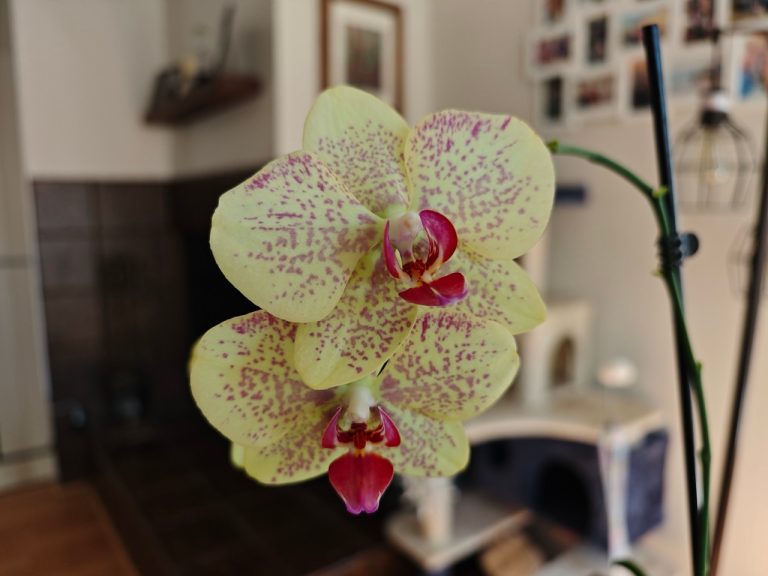Xiaomi 14 Ultra
The Xiaomi 14 Ultra is built to offer top performance and a stellar camera system. Does it succeed in being one of the best Android phones?
Pros
- Stunning camera
- Sleek design
- Excellent display
- Top-tier performance
Cons
- Expensive
Xiaomi wants to take on the ultra high-end. Last year, the company launched the Xiaomi 13 Ultra, a device that offered top-tier performance and a camera system that helped seriously push the boundaries of smartphone photography. Now, the company is back with an encore in the Xiaomi 14 Ultra.
Once again, the Xiaomi 14 Ultra aims to offer among the better smartphone camera systems, with a quad camera experience that includes two telephoto cameras. But the Xiaomi 14 Ultra has to be more than just a high-end camera system to be a great smartphone. How does it compete?
Xiaomi 14 Ultra specs
| Dimensions | 161.4 x 75.3 x 9.2 mm |
| IP rating | IP68 |
| Display resolution | 1440 x 3200 pixels |
| Display size | 6.73 inches |
| Display type | LTPO AMOLED |
| Display refresh rate | 1-120Hz |
| Display brightness | 3000 nits (peak) |
| Chipset | Qualcomm Snapdragon 8 Gen 3 |
| Memory | 8GB, 12GB, 16GB |
| Storage | 256GB, 512GB, 1TB |
| Rear cameras | Wide: 50MP, f/1.6-f/4.0, OIS Ultrawide: 50MP, f/1.8, 122-degrees Telephoto: 50MP, f/1.8, 3.2x zoom Periscope Telephoto: 50MP, f/2.5, 5x zoom |
| Video | 8K at 24fps, 1,080p at 1920 fps |
| Front camera | 32MP, f/2.0 |
| Ports | USB-C 3.2 |
| Battery size | 5,000mAh |
| Charging | 90W wired, 80W wireless, 10W reverse wireless |
| Connectivity | Bluetooth 5.4, Wi-Fi 7, 5G |
| Colors | Black, Blue, White, Titanium Gray |
| Price | € 1,299.99 |
Xiaomi 14 Ultra design
The Xiaomi 13 Ultra represented a pretty large design refresh for Xiaomi’s top-end phone, but the Xiaomi 14 Ultra is a little less aggressive — and in fact, where there are some minor differences between the two, you might be a little hard-pressed to find them.
Like the Xiaomi 13 Ultra, the Xiaomi 14 Ultra has a vegan leather back, which I really like. It helps deliver a more textured feel and a little more grip than you would get on a glass-back phone. It also helps make the phone feel more rugged, and like it can withstand a little more. The exception to this is the blue model, which does indeed have a glass back.
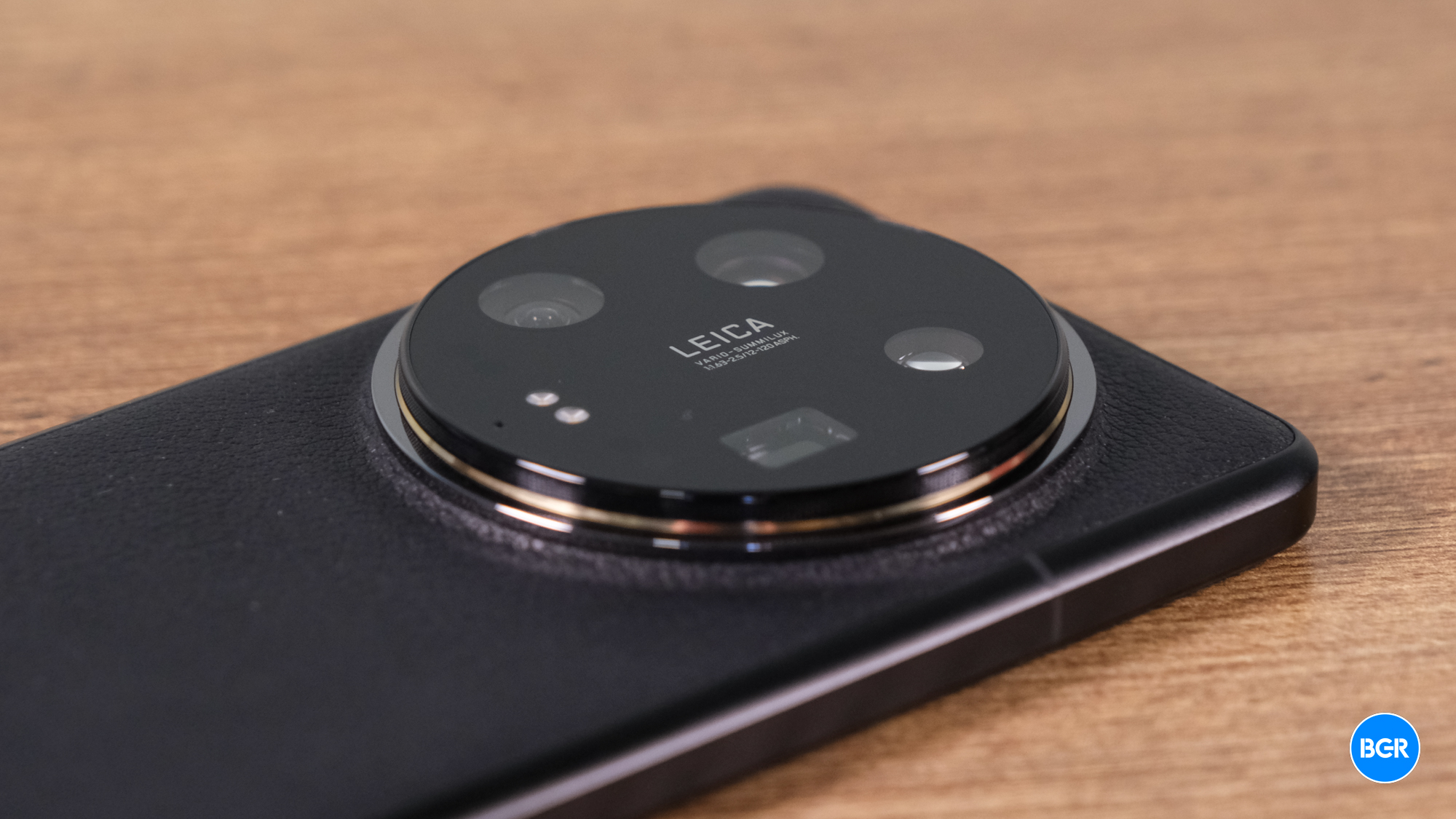
Also like the Xiaomi 13 Ultra, the new device offers a large circular camera module, with Leica branding, which houses four camera sensors. Apart from that, the phone has a USB-C port on the bottom, and volume and power buttons on the right. On the front, there’s an edge-to-edge screen with a hole-punch cutout for the front-facing camera.
It’s really quite a good-looking phone, and it’s available in a number of different colors too. Our review unit is the black model, but it’s also available in blue, white, and titanium gray.
Xiaomi 14 Ultra display
The screen on the Xiaomi 14 Ultra sits at 6.73 inches, with a resolution of 1440 x 3200 pixels. It’s an LTPO AMOLED screen that can vary its refresh rate from 1Hz to 120Hz, and it has a peak brightness of 3,000 nits, with a typical brightness of 1,440p. The display supports Dolby Vision and HDR10+.
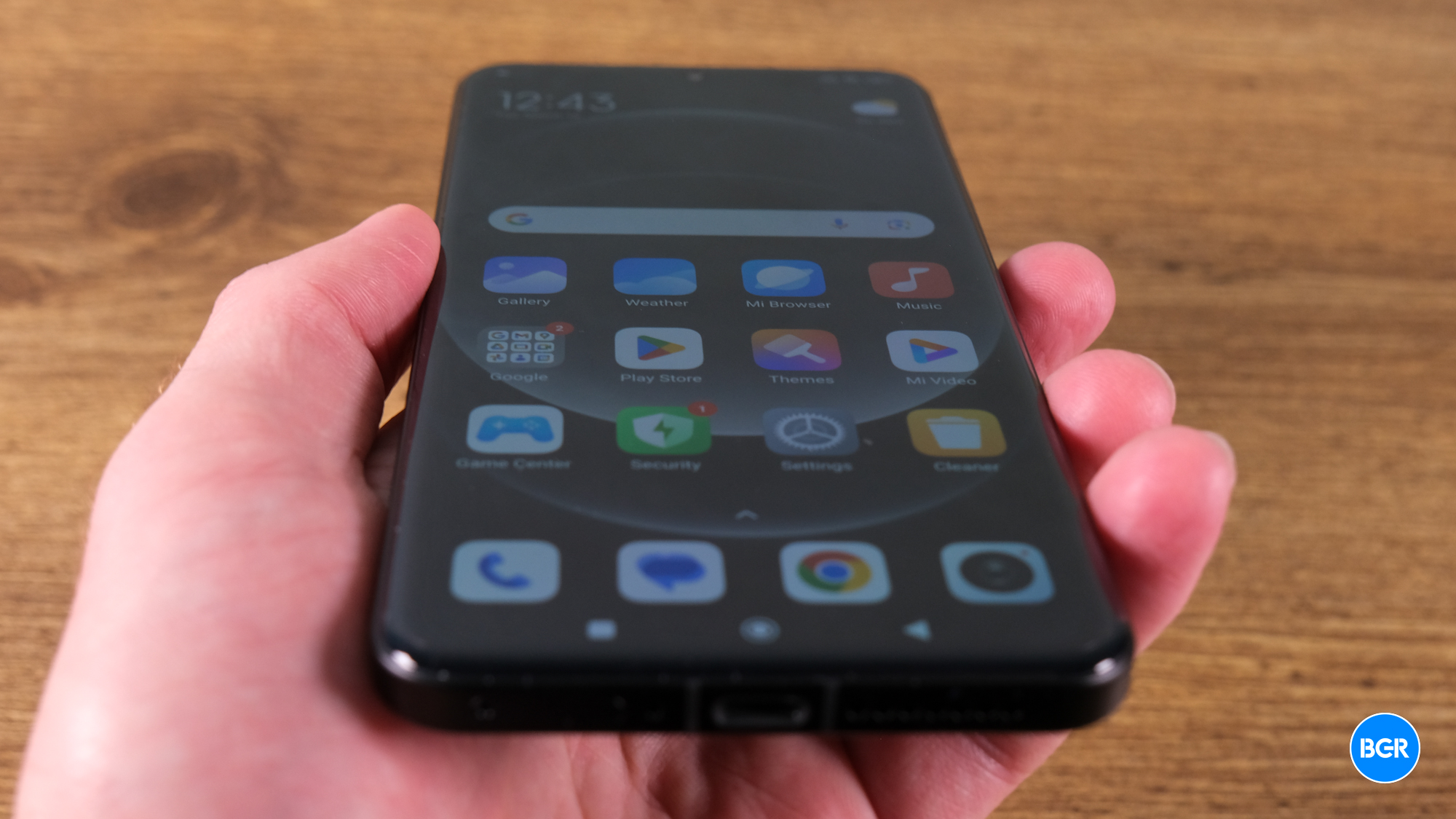
Frankly, the display looks stunning — however, in 2024, that doesn’t seem to be uncommon. We’re at a point now where phone makers building high-end, premium phones, are able to hit all the important points when it comes to the display. Sure, there are differences between the screens on the Samsung Galaxy S24 Ultra, Honor Magic6 Pro, and Xiaomi 14 Ultra, but the differences are relatively minor, and there’s no reason you shouldn’t be getting a great screen on a flagship phone.
The only real difference between the Xiaomi 14 and Xiaomi 14 Ultra display is the resolution — however, while the actual resolution is different, the screen density is the same, so they should look as crisp as each other.
Xiaomi 14 Ultra performance
Under the hood, the Xiaomi 14 Ultra is top-tier. The phone offers a Qualcomm Snapdragon 8 Gen 3 processor, coupled with either 12GB or 16GB of RAM. Basically, it’s one of the better-performing Android phones out there and will load games quickly, handle multitasking with ease, and so on.
Here are the benchmark results we achieved with the Xiaomi 14 Ultra.
- GeekBench 6: 2,242 single-core, 6,752 multi-core
- 3DMark Wild Life Extreme: 4,600
These are excellent results and on par with other Snapdragon 8 Gen 3-equipped devices.
Xiaomi 14 Ultra battery and charging

Powering the Xiaomi 14 Ultra is a 5,000mAh battery, at least when it comes to the global model — as the Chinese model has a larger 5,300mAh battery. In day to day use, I found the battery to be fine, but I was a little surprised to find it perform a little lower than expected. It’s possible that Xiaomi hasn’t really nailed battery optomization here, and that could be fixed through a software update, though we’ll have to wait and see. I was able to get it through a day of moderate use, but not much longer.
It charges quickly, though. The device supports 90W wired charging, and a huge 80W wireless charging — with the right accessories. It also supports 10W reverse wireless charging, to help you keep your wearables and earbuds charged up.
Xiaomi 14 Ultra camera
With the Xiaomi 14 Ultra, Xiaomi is seriously leaning into mobile photography — and the camera system is the main difference between the Xiaomi 14 Ultra and the standard Xiaomi 14. So much so that alongside the phone, Xiaomi is shipping a so-called “Photography Kit.”
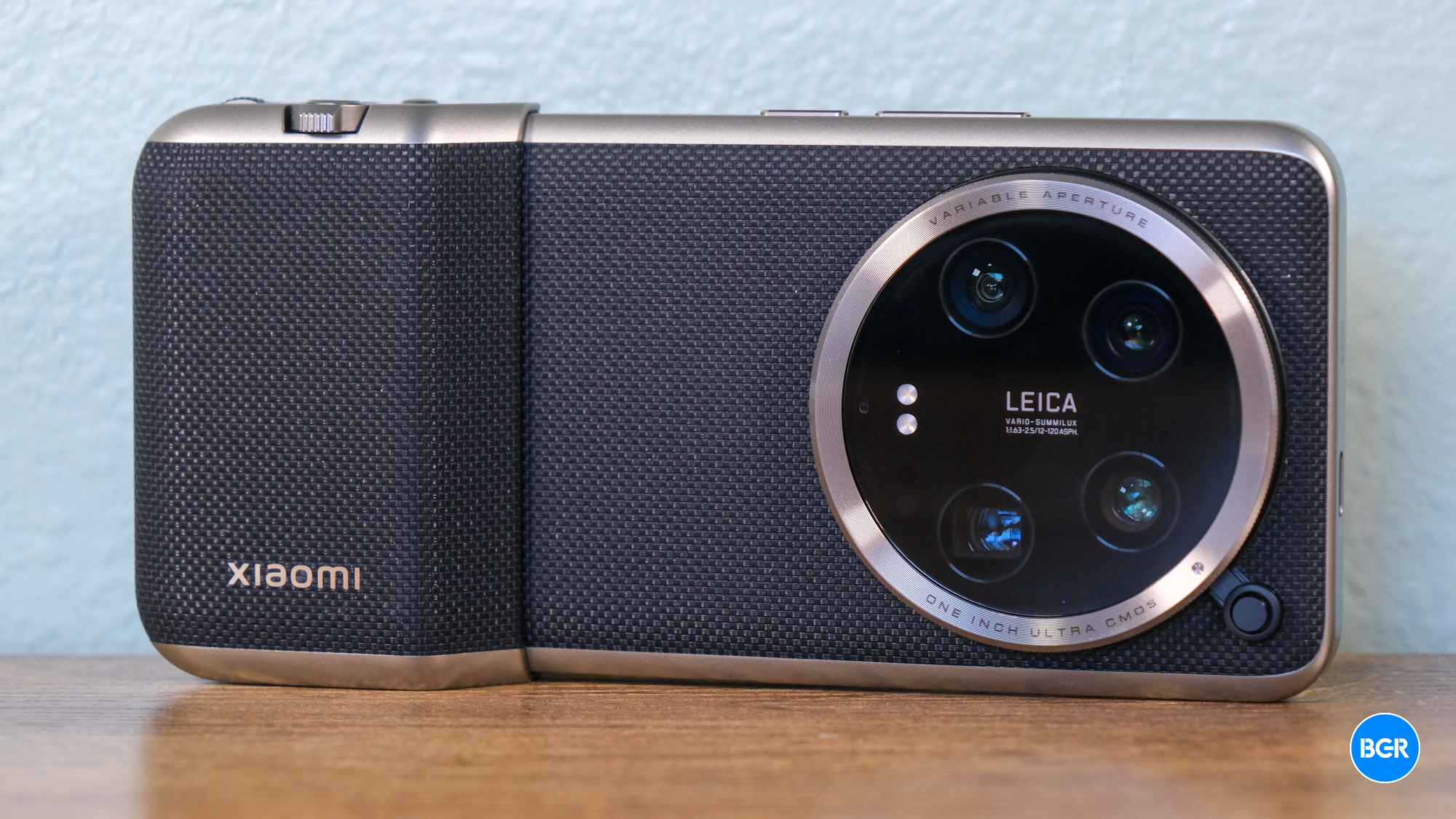
The camera system is made up of four cameras, including a 50-megapixel main camera, a 50-megapixel telephoto camera with 3.2x optical zoom, a 50-megapixel periscope telephoto camera with 5x optical zoom, and a 50-megapixel ultrawide camera with a 122-degree field-of-view. The main camera is backed by a latest-gen 1-inch sensor that should allow for better low-light photography. It’s a versatile setup and should allow for high-quality images in a variety of situations.
The Photography Kit includes a grip, a 67mm lens filter adapter, and a decorative ring. The grip is perhaps the most helpful of these accessories, offering a shutter button, a record button, and a wheel to change exposure. The device also has a battery built into it and can charge the phone through the USB-C port. It’s a cool idea, but for most, perhaps not a must-have — it doesn’t actually change image quality unless you use a lens filter, which doesn’t come with the kit.
When it comes to actual image quality, it’s very good. In unchallenging situations (with good lighting, no backlighting, no motion, etc), images are crisp, detailed, and vibrant. But where the camera really shines is in the more challenging situations. Low-light images are great, and the phone is able to deliver excellent detail at any level of zoom up to around 10x or so — and even beyond that, photos still look quite good. The phone supports zoom at up to 120x, and obviously, at that level of zoom, images don’t look great — but I was surprised to see more detail than the vast majority of other devices that can zoom to this level. Portrait Mode images are quite good too,
The Xiaomi 14 Ultra has one of the best cameras in the business — and if you’re looking for top-tier smartphone photography, you’ll love what’s on offer here.
Xiaomi 14 Ultra software
The software experience on Xiaomi phones has never been a major selling point, and you’ll be disappointed if you expect a major change here — though there are some tweaks in the shift away from MIUI. Xiaomi’s HyperOS still offers a little more bloat than I would have liked to see, but you will get used to it, and you can delete some of the additional apps.
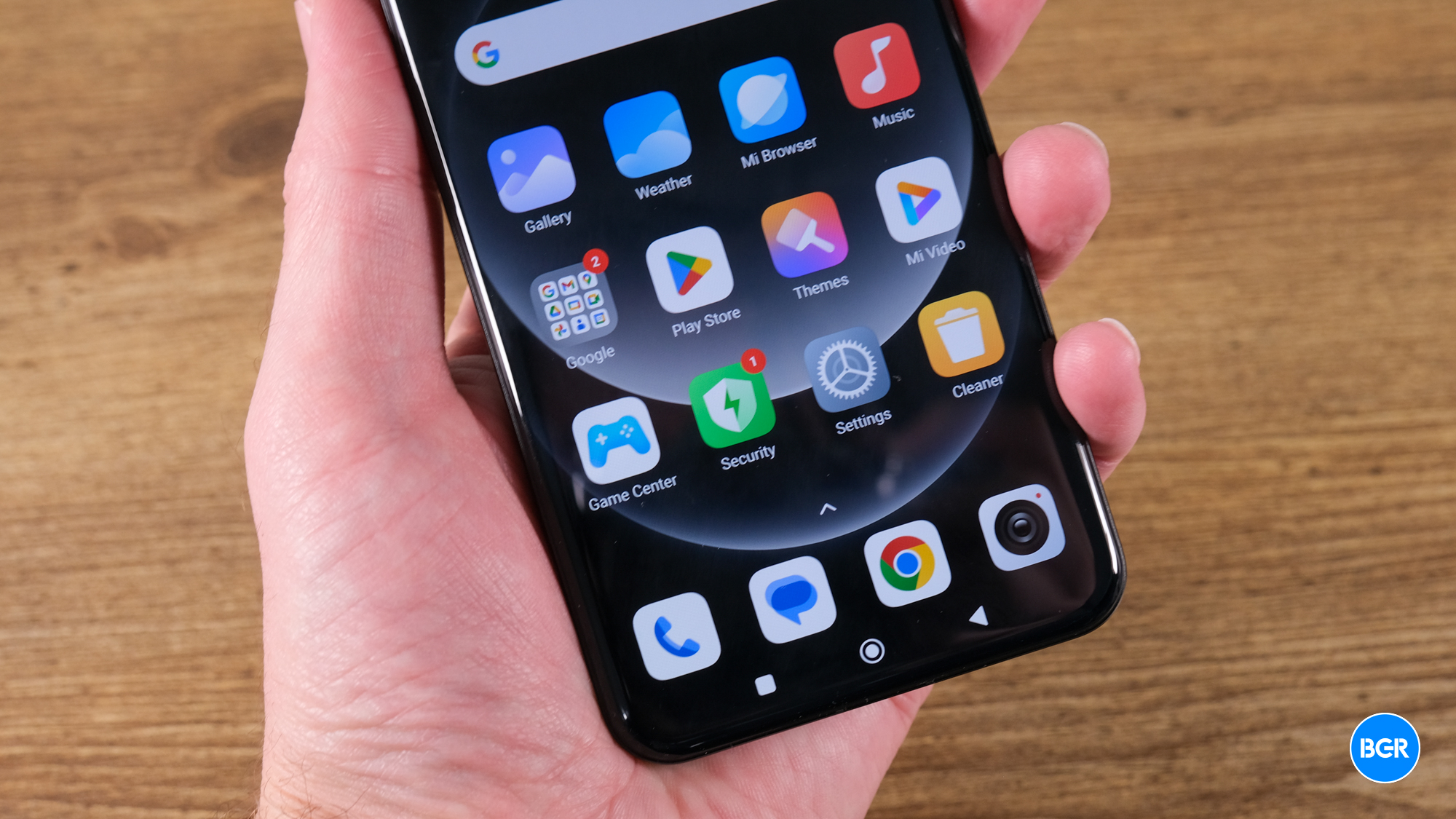
Like MIUI before it, HyperOS still offers an iOS-style control center, which I don’t mind — however if you’re a long-time Android user, you may not love it.
Overall, HyperOS does feel a little more scaled back than MIUI, but again, it isn’t a radical shift.
Xiaomi is making more of an effort when it comes to updates though. The company has promised four years of operating system updates and five years of security updates — which is better than it has offered in the past, though still not quite on the level of Samsung or Apple.
Conclusions
The Xiaomi 14 Ultra is a worthy alternative to the other top flagships of the day, like the Galaxy S24 Ultra and Honor Magic6 Pro. The phone offers impressive performance, a stunning screen, and a stellar camera system — and while it’s a little pricey, those looking for one of the best devices out there, with an emphasis on camera tech, will love the Xiaomi 14 Ultra.
The competition
There’s quite a bit of competition in the high-end Android phone space. If you have access to the Galaxy S24 Ultra, it may be a better option for its slightly more approachable software experience. It’s also worth considering against the Honor Magic6 Pro, however the Xiaomi 14 Ultra is probably a better choice for its more versatile camera.
Should I buy the Xiaomi 14 Ultra?
Yes. It’s amongst the best Android phones out right now.


